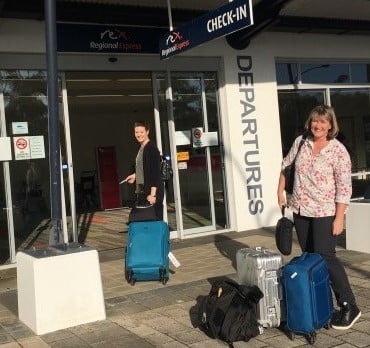
Nearly six return trips to the moon — 4,612,800km — that’s the incredible distance Children’s Diabetes Centre (CDC) staff have collectively travelled to deliver specialist care to kids living with diabetes in regional Western Australia over the past 28 years.
Perth Children’s Hospital’s (PCH) Diabetes Service, as part of the CDC, is committed to ensuring its patients — all children diagnosed with diabetes in WA — receive the best care and access to the latest therapies. And if that means hitting the road, then that’s what the team does.
From Albany, Bunbury and Esperance in the south, to Geraldton, Karratha and Roebourne in the north and Kalgoorlie and Northam to the east, the team regularly travels far and wide to ensure that diabetes patients in regional areas have access to the same specialist care as those in the metropolitan region.
In fact, WA is the largest geographical region in the world under the care of one paediatric diabetes service.
Professor Liz Davis, CDC co-director and PCH’s Head of Endocrinology and Diabetes, said while telehealth aided some medical conditions in regional areas, this type of technology was not suitable for delivering medical care to young people with diabetes, irrespective of their address.
“These patients need face-to-face specialist care from a multidisciplinary team so that’s why we run regional clinics regularly to ensure every child, adolescent or young adult living with diabetes in regional WA is equally as well looked after as their city counterparts,” she said.
The Outreach program involves a minimum of four clinics in each location (Bunbury has monthly clinics) to replicate the number of appointments a patient living in Perth has at the Diabetes Service at PCH each year.
The multidisciplinary team — an endocrinologist, diabetes nurse educator, diabetes dietitian and social worker — also conduct clinics in outer metropolitan areas including Rockingham (every other week), Midland (monthly) and Joondalup (every other week).
Patients with diabetes further afield can access the Patient Assisted Travel Scheme (PATS) to fund their travel to Perth for specialist care.
Regardless of the location, every patient with diabetes has face-to-face time with each team member and every effort is made to have the same team visit individual patients for continuity of care.
“The Outreach program works because of the commitment from staff to care for their patients,” Professor Davis said.
“Typically regional clinics are long days with very early starts and late finishes and can only operate on the goodwill of staff who recognise the benefits of care closer to home for paediatric patients residing in rural WA.”
THE FIGURES
- Total annual distance travelled by 4 members of Outreach team in WA: 158,320km (39,580km each)
- Total distance over 28 years: 4,432,960km
- Return trip to the moon: 768,800km
